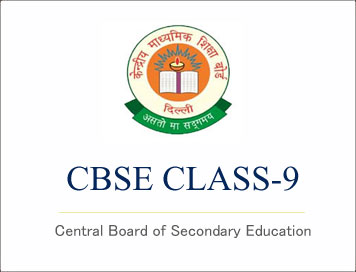CBSE Class-9 Syllabus 2019-20 (Science)
Disclaimer: This website is NOT associated with CBSE, for official website of CBSE visit - www.cbse.gov.in
CBSE Class-9 Syllabus 2019-20 (Science)
The subject of Science plays an important role in developing well-defined abilities in cognitive, affective and psychomotor domains in children. It augments the spirit of enquiry, creativity, objectivity and aesthetic sensibility.
Upper primary stage demands that a number of opportunities should be provided to the students to engage them with the processes of Science like observing, recording observations, drawing, tabulation, plotting graphs, etc., whereas the secondary stage also expects abstraction and quantitative reasoning to occupy a more central place in the teaching and learning of Science. Thus, the idea of atoms and molecules being the building blocks of
matter makes its appearance, as does Newton’s law of gravitation.
The present syllabus has been designed around seven broad themes viz. Food; Materials; The World of The Living; How Things Work; Moving Things, People and Ideas; Natural Phenomenon and Natural Resources. Special care has been taken to avoid temptation of adding too many concepts than can be comfortably learnt in the given time frame. No attempt has been made to be comprehensive.
At this stage, while science is still a common subject, the disciplines of Physics, Chemistry and Biology begin to emerge. The students should be exposed to experiences based on hands on activities as well as modes of reasoning that are typical of the subject.
General Instructions:
1. There will be an Annual examination based on entire syllabus.
2. The annual examination will be of 80 marks and 20 marks shall be for Internal Assessment.
3. The components of Internal Assessment would be:
a. Periodic Assessment of 10 marks that would include:
- For 5 marks- Three periodic tests conducted by the school. Average of the best two tests to be taken. This will have a weightage of 05 marks towards the final result.
- For 5 marks- Diverse methods of assessment as per the need of the class dynamics and curriculum transaction.These may include- short tests, oral test, quiz, concept map, etc. This will also have a weightage of 5 marks towards the final result.
b. Practical / Laboratory work should be done throughout the year and the student should maintain record of the same. Practical Assessment should be continuous.There will be weightage of 5 marks towards the final result. All practicals listed in the syllabus must be completed.
c. Portfolio to be prepared by the student- This would include classwork, other sample of student work, self-assessment and peer-assessment. This will carry a weightage of 5 marks towards the final results.
COURSE STRUCTURE CLASS IX
(Annual Examination)
|
Unit No. |
Unit |
Marks |
| I | Matter - Its Nature and Behaviour |
23 |
| II | Organisation in the Living World |
20 |
| III | Motion, Force and Work |
27 |
|
IV |
Our Environment |
06 |
|
V |
Food; Food Production |
04 |
| Total |
80 |
|
| Internal assessment |
20 |
|
| Grand Total |
100 |
Note: Above weightage includes the weightage of questions based on practical skills.
Theme: Materials (50 Periods)
Unit I: Matter-Nature and Behaviour
Definition of matter; solid, liquid and gas; characteristics - shape, volume, density; change of state-melting (absorption of heat), freezing, evaporation (cooling by evaporation), condensation, sublimation.
Nature of matter: Elements, compounds and mixtures. Heterogeneous and homogenous mixtures, colloids and suspensions.
Particle nature, basic units: Atoms and molecules, Law of constant proportions, Atomic and molecular masses. Mole concept: Relationship of mole to mass of the particles and numbers.
Structure of atoms: Electrons, protons and neutrons, valency, chemical formula of common compounds. Isotopes and Isobars.
Theme: The World of the Living (45 Periods)
Unit II: Organization in the Living World
Cell - Basic Unit of life : Cell as a basic unit of life; prokaryotic and eukaryotic cells, multicellular organisms; cell membrane and cell wall, cell organelles and cell inclusions; chloroplast, mitochondria, vacuoles, endoplasmic reticulum, Golgi apparatus; nucleus, chromosomes - basic structure, number.
Tissues, Organs, Organ System, Organism:
Structure and functions of animal and plant tissues (only four types of tissues in animals; Meristematic and Permanent tissues in plants).
Click Here To Download Full Syllabus
Courtesy: CBSE
